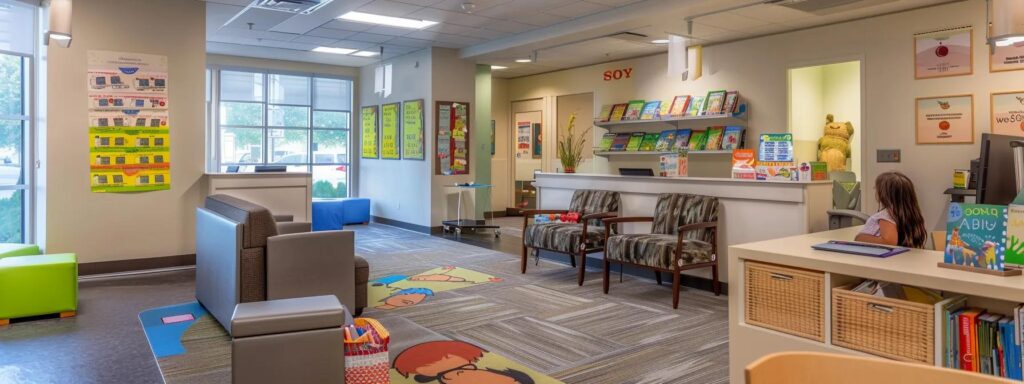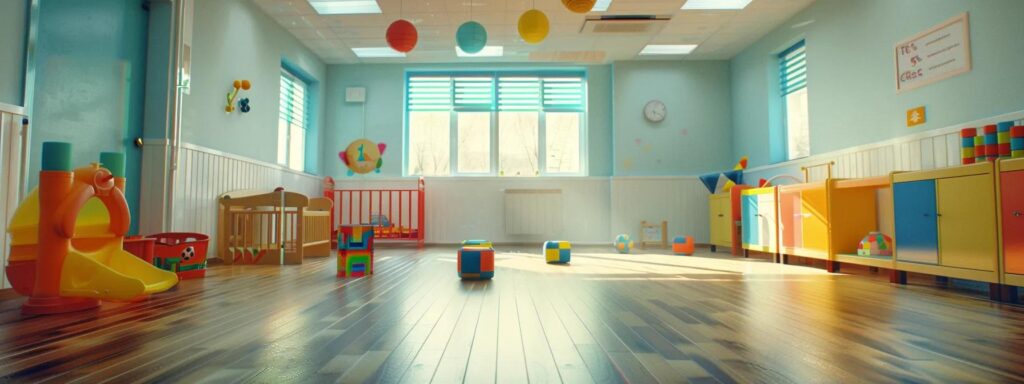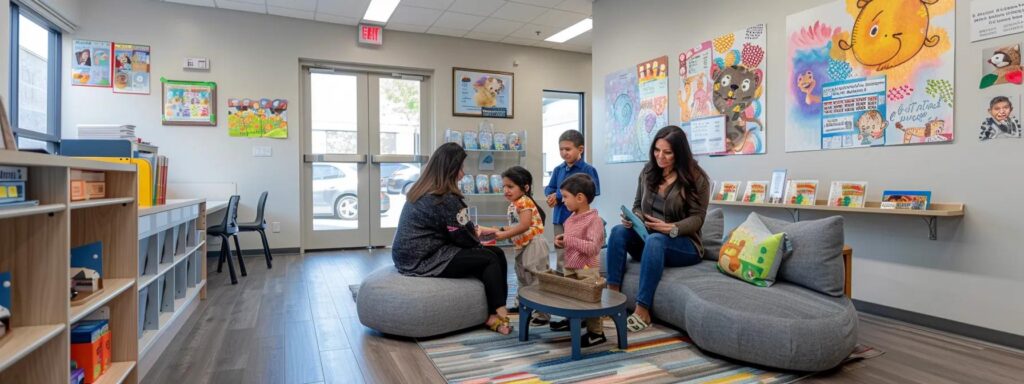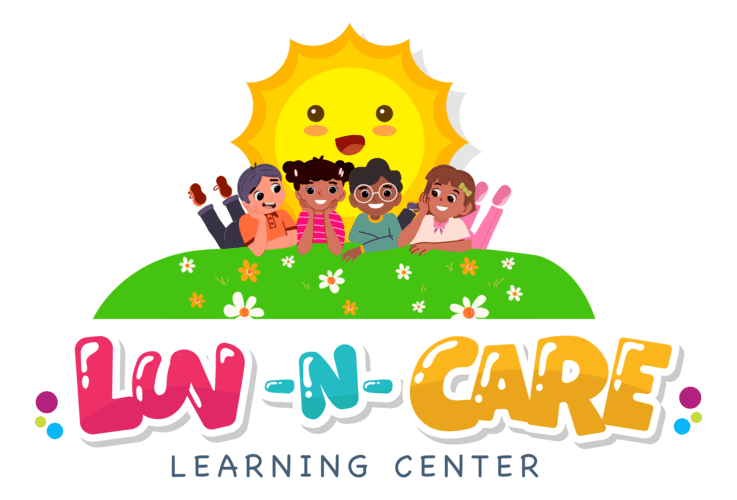

extracurricular activitiesimmunization policiesreputation in the communityvalues resonateprogramssettingshealthroutinesprograms in placelicensinghighest standardsroutine immunizationdaycare providersparental engagementparentsrelationship with your daycare providerfee structuresocial interactionsongoing supportreviewsreliabilitylicensing statussatisfactionprogramsplace will nurturewell-beinginfant programhonest, everyday realitiestransition or orientation process
Comprehensive Guide to Evaluating Daycare Programs: Contents
- How to Evaluate the Quality of Childcare Programs
- Starting Your Journey: Key First Steps in Finding Reliable Childcare
- Core Elements to Scrutinize: What to Look for in a Daycare Program
- Prioritizing Wellbeing: Your Essential Daycare Safety Checklist
- Effective Communication: Crucial Questions to Ask a Daycare Provider
- Identifying Excellence: Recognizing the Qualities of a Good Daycare Center
- Making an Informed Choice: Utilizing Reviews and Understanding Daycare Types
- Finalizing Your Decision: Top Tips for Evaluating Daycare Programs With Confidence
- Frequently Asked Questions
- Final Thoughts
How to Evaluate the Quality of Childcare Programs
In my 25+ years as a daycare director at Luv-N-Care Learning Center, I have learned that finding the right childcare program is one of the most important decisions a family can make. Many parents struggle with questions surrounding curriculum, facility policies, hygiene practices, teacher qualifications, and how to assess the overall learning environment. In today’s busy world with so many options—from infant daycare to afterschool care—it is essential to know what criteria to use when evaluating daycare centers. Reliable childcare not only nurtures a child’s development and creativity but also supports emerging skills such as socialization, motor skills, and language learning. In this article, I will share my step-by-step journey and proven methods for assessing childcare programs. For additional context about our background and approach, please visit our about-us page. I will address essential questions regarding curriculum, development policy, health and hygiene protocols, teacher-to-child ratios, safety procedures, and beyond. My goal is to provide actionable tips that empower you to make an informed decision for your child’s care and early education. Let’s begin our journey into finding quality childcare that can support the growth and well-being of your little ones.
Starting Your Journey: Key First Steps in Finding Reliable Childcare

When you first start searching for reliable childcare, the process can seem overwhelming. The fundamental steps include identifying your family’s unique needs, gathering information about local programs, and scheduling visits. It is important to define what matters most to you—whether it is the school’s curriculum, development philosophy,
, or even the child-to-caregiver ratio. Families have diverse expectations when it comes to educational philosophy, child care center safety, fee structures, and even aspects like nutrition and snack menus.
Defining Your Family's Unique Childcare Requirements

The first step in any evaluation is to clearly define your family’s unique childcare requirements. Consider your work schedule, transportation needs, and the specific developmental goals you have for your child. For example, if early childhood education is a priority, you may want a facility that emphasizes skills like toilet training, learning about immunization, and even engaging in creative play with toys that also inspire motor skills development. Additionally, consider what schedule works best—do you need full-day infant care or a flexible afterschool program? This initial clarification helps narrow down options while ensuring that the daycare you choose aligns with your family’s lifestyle and long-term educational goals.
Understanding these needs will also encourage you to speak with potential childcare providers about their curriculum and teaching methods. Look for centers that not only prepare their children academically but also foster communication, empathy, and social skills. As parents, clear communication and transparency in policies such as discipline, fee adjustments, and health protocols are indispensable. When outlining your needs, jot down areas like
, first aid preparedness, and emergency procedures that every reputable facility should have in place.
Researching Different Daycare Options in Your Area

Once your family’s requirements are well defined, the next step is to research different daycare options within your area. Begin with online searches using keywords such as “child care center near me,” “licensed daycare,” or even “daycare tour near Houston.” Utilize local parenting groups, review sites, and social media platforms for recommendations about daycare centers and childcare facilities. It is not uncommon for parents to find that reviews provide both detailed information about teacher qualifications and the overall atmosphere of the center. In many cases, hearing about others’ experiences in areas like high quality infant daycare centers, engaging programs, and effective communication policies can help gauge the quality of a daycare center.
Take note of a few highly recommended facilities and schedule initial phone interviews. Ask them specific questions regarding curriculum development, learning environment, teacher turnover, and nutritional menus. Use keywords such as “accreditation,” “first aid,” and “daycare provider experience” to assess whether the center meets high standards. Forming a shortlist among those that receive strong endorsements makes the next step—on-site visits—more manageable. During research, make sure you also consider factors like proximity to home or work, the facility’s reputation regarding safety and hygiene practices, and even the structure of the daily routine activities.
Understanding the Basics of How to Choose a Daycare for Your Child

It is essential to understand the basics of how to choose a daycare for your child. Begin by learning what essential elements a quality daycare program should include. For instance, a high-quality center typically maintains a low child-to-teacher ratio, ensuring that each child receives sufficient attention. Additionally, the curriculum should be designed to encourage social skills alongside academic learning, and should incorporate activities that support hands-on, creative play. Policies on health, hygiene, and nutrition are equally critical. Ask questions about how the facility manages emergencies, what their immunization protocols are, whether they verify background checks for all caregivers, and how often they review and update their developmental research.
Knowing these details allows you to compare options more objectively. During the selection process, consider asking for a detailed parent handbook or policy guide which outlines everything from snack times and nap schedules to field trips and holiday closure policies. This transparency reflects a center’s commitment to excellence and will give you more confidence in the safety and preparedness of the childcare center. A well-established daycare center should be open to discussion and willing to provide clear evidence of licensing, accreditations, and compliance with the American Academy of Pediatrics recommendations.
Creating a Shortlist of Potential Childcare Centers

After thorough research, create a shortlist of potential childcare centers that align with your child’s developmental needs and your family’s logistical requirements. A shortlist may consist of five or more centers, each carefully selected based on factors like curriculum richness, quality of teacher-child interactions, facility safety, and overall
. Visit the websites of these providers for more detailed information about their daily programs, fee structures, and parent testimonials. In addition, take note of whether they support learning through innovative teaching methods, such as early exposure to scientific topics or interactive play which enhances cognitive functions.Once your shortlist is ready, arrange for physical visits or daycare tours if possible. On these visits, observe the environment to ensure that it is clean, engaging, and safe. Ask about parent communication methods, such as daily reports or how they handle feedback. A well-chosen daycare program will offer ample opportunities for children to engage in creative activities, group play, and age-appropriate learning experiences. Always ensure that you feel comfortable with the facility and that its
with what you have outlined as essential requirements.
Key Takeaways: – Define your family’s needs clearly to set your criteria. – Use online resources and word-of-mouth to research local daycare options. – Understand the core elements of quality daycare, from child-to-teacher ratios to curriculum standards. – Create a shortlist and plan visits to further evaluate the potential centers.
Core Elements to Scrutinize: What to Look for in a Daycare Program

When evaluating a daycare program, there are several core elements that you need to scrutinize meticulously. The quality of the learning environment, the educational approach, and the overall atmosphere are cornerstones of a safe and nurturing childcare facility. Parents should look for
that provide a structured yet flexible curriculum that supports child development in all areas—cognitive, social, emotional, and physical. When centers have clear daily routines and intentional learning activities, it encourages the growth of creativity and self-confidence in children. For example, some centers might focus on early childhood education research by incorporating play-based learning and experiments that foster scientific inquiry from a young age.
Assessing the Learning Environment and Educational Approach

The learning environment at a daycare is critical; a nurturing and stimulating environment promotes better learning outcomes. When assessing a center, I always look for classrooms that are bright, spacious, and rich in educational tools and thematic play areas. Centers should display an educational philosophy that aligns with developmental psychology principles, ensuring that every activity is designed with child development in mind. Have a look for evidence of curriculum updates that incorporate modern research—such as integrating sensory play, fine motor skill activities, and early exposure to literacy and math concepts.
It is important also to examine whether the daycare implements regular feedback from parents and staff, uses age-appropriate educational toys, and follows a structured yet flexible daily schedule. Ask questions regarding their approach to individualized learning, especially for infants vs. preschoolers. The blend of creative freedom and structured lessons in a daycare’s educational approach fosters both academic readiness and socio-emotional balance, empowering children to express their emotions in a safe setting.
Evaluating Staff Qualifications, Ratios, and Interaction Styles

Another essential criterion is the quality of the staff. Look for daycare centers that employ qualified, experienced caregivers who possess certifications in early childhood education and first aid. A key sign of a high-quality center is a low child-to-teacher ratio. This ensures personal attention for every child, enhancing their learning and social interaction. In my experience, centers that maintain higher staff ratios foster stronger relationships between teachers and children, leading to better communication and understanding of each child’s unique needs.
During tours, observe how staff interact with the children. Do they engage in constructive play? Are they patient, clear in communication, and responsive to emotional cues? An ideal daycare program not only focuses on educational excellence but also on nurturing a supportive environment where children feel valued and understood. Effective caregiver interactions can directly influence a child’s language development, social skills, and overall ability to thrive in educational
.
Examining Daily Routines, Nutrition, and Rest Policies

Daily routines play a significant role in developing a child’s schedule and time-management skills. High-quality daycare centers will have well-planned routines that include time for structured learning, creative play, meals, and rest. Ask about how the center manages nap times and whether they support healthy meal programs that include balanced nutrition. The inclusion of nutritious snacks and meals, prepared in compliance with health guidelines, assures parents that the center values the wellbeing of every child. Areas such as proper hand washing practices before meals and after play sessions are critical hygiene practices that protect children from illness and support overall
.A consistent daily routine also builds a sense of security and predictability, which is crucial for early childhood development. Facilities that include activities related to physical movement and quiet time for rest help in the development of motor skills and ensure that children do not become overstimulated by their environment. Incorporating structured yet adaptable
means that children can explore their interests while also enjoying necessary periods of calm.
Observing Child Engagement and Overall Atmosphere
When visiting a daycare, take the time to observe the interactions among children and between children and teachers. Children should appear happy, visibly engaged, and comfortable in the environment. An active, positive atmosphere is often an indicator of a well-run facility. The space should offer diverse play areas such as reading corners, creative art spaces, and safe outdoor playgrounds that promote physical activity and social engagement. Check to see if children are encouraged to explore different activities and if there are
that foster problem-solving and confidence building.
Furthermore, the facility’s ambience—how its interior design, lighting, and decor interact with children’s moods—can play a huge role. Areas designated for quiet reading or structured group activities should be evident, indicating that the center balances practical care with developmental enrichment. It is also important to consider the center’s disciplinary philosophies and whether they align with your family’s approach to nurturing behavior through empathetic, structured guidance.
Key Takeaways: – A quality daycare should offer a stimulating learning environment with age-appropriate materials. – Staff qualifications and low child-to-teacher ratios are vital for personal attention. – Established daily routines that include educational play, nutrition, and rest support holistic development. – Observing genuine child engagement and warmth in caregiver interactions is a positive sign.
Prioritizing Wellbeing: Your Essential Daycare Safety Checklist
When it comes to childcare, safety is non-negotiable. Parents must scrutinize how a daycare center handles safety, sanitation, and emergency preparedness. Ensuring that the facility maintains rigorous standards is essential not only for learning but also for the overall well-being of your child. Quality daycare centers implement safety measures that cover everything from
and accreditation to daily hygiene practices and lockdown procedures.
Verifying Licensing, Accreditations, and Compliance Records
A fundamental step in evaluating a daycare center is verifying that it is fully licensed and accredited by state and local regulatory bodies. Licensing ensures that the center adheres to minimum safety and quality standards. Accreditation from an independent agency is an additional indicator of excellence, often involving more rigorous processes that assess curriculum, teacher training, health policies, and facilities. Ask to see copies of their licenses and compliance records. For example, many centers proudly display certificates confirming their adherence to standards recommended by entities such as the American Academy of Pediatrics.
This verification is not merely a formality—it is a critical measure of accountability. Parents should confirm that background checks have been conducted on all caregivers and that there are strict policies regarding staff turnover and professional development. Additionally, inquire about the center’s history of compliance with health inspections and accident reports. Transparent sharing of these documents can provide significant reassurance about the facility’s commitment to maintaining the
of safety.
Inspecting Physical Safety of Indoor and Outdoor Spaces
The physical environment of a daycare—both indoors and outdoors—must meet strict safety protocols. During your on-site visit, carefully inspect classrooms, play areas, kitchens, and nap rooms for hazards. Check that all equipment is age-appropriate, well-maintained, and placed in a manner that minimizes injury risk. For outdoor spaces, ensure that playground structures are securely anchored, soft-fall surfaces are in place, and the area is fenced properly to prevent unsupervised exits. Safety is also reflected in the accessibility of emergency exits, the presence of secure storage for cleaning supplies and medications, and the overall upkeep of the infrastructure.
Centers that prioritize safety often have detailed emergency protocols and conduct regular fire drills and safety checks. Policies such as secure pick-up and drop-off routines, visitor sign-in systems, and surveillance throughout key areas further enhance security. I always ask how frequently the daycare updates its safety equipment and whether they have partnerships with local emergency services to ensure rapid response in critical situations. These factors collectively contribute to a secure environment where children are safe while they learn and play.
Reviewing Health, Hygiene, and Emergency Protocols
Health and hygiene are particularly important in childcare environments, where children are more susceptible to infections. A high-quality daycare will have strict hand washing policies, regular sanitizing routines, and clear illness guidelines. Ask about protocols for cleaning toys, surfaces, and shared spaces. In this era of heightened awareness around immunization and infection control, it is essential that the center follows strict health guidelines to protect all children under their care. Detailed records, including plans for managing outbreaks and ensuring
compliance, should be readily available.
Furthermore, effective emergency protocols are crucial. Whether it is natural disasters, medical emergencies, or unexpected events, the daycare should have organized and well-documented emergency procedures. These should include evacuation plans, first aid readiness, and quick access to emergency contact information for every child. Evaluate the center’s record on health and safety by asking for recent inspection reports and speaking with current parents about their experiences. A center that prioritizes health and safety will also provide emergency preparedness training to all staff members, ensuring that they are well-equipped to manage any situation confidently.
Ensuring Secure Pick-Up and Drop-Off Procedures
Finally, secure pick-up and drop-off procedures are essential to protecting children during transitions between home and the childcare center. This means that robust policies should be in place to verify the identity of individuals authorized for child pick-up. Many centers use secure sign-in systems, either paper-based or electronic, and sometimes even biometric verification methods to ensure that only designated individuals are allowed to retrieve children. Additionally, organized waiting areas and clearly defined protocols reduce the risk of confusion and accidental releases.
Communication with parents about any changes in pick-up arrangements should be immediate and mandatory, as unexpected changes can compromise the child’s safety. I encourage parents to ask detailed questions about how the center manages these crucial moments and whether they offer features like real-time notifications through mobile apps. Knowing that there is a structured, secure, and well-practiced procedure for drop-offs and pick-ups can provide immense peace of mind while your child is in care.
Key Takeaways: – Verify that the daycare is fully licensed and accredited, with updated compliance records. – Assess both indoor and outdoor facilities for potential hazards and maintenance quality. – Ensure rigorous health, hygiene, and emergency protocols are in place. – Secure pick-up and drop-off procedures are essential for child safety and parental peace of mind.
Effective Communication: Crucial Questions to Ask a Daycare Provider
Effective communication between parents and
is pivotal for ensuring quality care and addressing any concerns promptly. Before enrolling your child, it is essential that you ask relevant questions about the daycare’s policies and daily operations. Clear communication can reveal if the daycare center has a transparent approach, consistent policy enforcement, and a strong history of resolving conflicts. These conversations can also provide insight into the center’s curriculum, teacher training, and how feedback is managed.
Inquiring About Staff Experience, Training, and Turnover
One of the first questions I always ask is about the staff’s experience, qualifications, and training processes. A quality daycare center should have caregivers who hold certifications in early childhood education and first aid. Inquire about ongoing professional development programs and how the center handles staff turnover. High turnover can be a red flag, as consistency is critical for childhood development. It is also important to learn how long teachers have been with the center and whether they receive specialized training in behavior management and developmental psychology.
Knowing that the staff is both experienced and well-trained gives you confidence in their ability to manage emergency situations, support learning, and build meaningful relationships with children. Effective training programs often include modules on child development, communication techniques, and even
strategies. Ask for examples of positive interactions between staff and children that highlight the center’s approach to engaging young minds. This question also helps in understanding whether the center values creativity, empathy, and structured discipline in its teaching style.
Understanding Communication Channels for Updates and Concerns
Clear and consistent communication channels are essential for keeping parents informed about their child’s progress and any issues that may arise throughout the day. It is important to ask how the center communicates with parents. Do they use daily reports, digital apps, or emails? You should also inquire if there is a designated point of contact for parents to seek clarifications about policies or daily activities. Some centers even offer real-time video updates during the day, which can be particularly reassuring for working parents.
Understanding the frequency and mode of communication is critical in a childcare setting. This transparency also reflects positively on how the center handles feedback and resolves any concerns. As a parent, knowing you can easily reach a teacher if your child faces any difficulties during play or learning can help in maintaining open parent-teacher relations. In our center, we believe that routine check-ins and a dedicated parent portal foster a strong, shared commitment to the child’s development and ensure that any issues are immediately addressed.
Clarifying Discipline Policies and Conflict Resolution Methods
A crucial aspect of any childcare program is how they manage discipline and resolve conflicts among children or between child and teacher. It is important to ask specific questions about their discipline policies: Are they based on positive reinforcement strategies? How do they handle behavioral challenges without resorting to punitive measures? High-quality childcare centers typically emphasize structured, consistent, and compassionate approaches to teaching children self-discipline and responsibility. Understanding their techniques helps establish whether their methods align with your values, be it fostering empathy or encouraging resilience through positive feedback.
By investigating how a daycare center deals with conflicts, you also gain insight into how they support the development of social skills and emotional regulation. Ask for examples of previous incidents and how they were resolved, ensuring that all disciplinary actions are documented and communicated to
. An effective conflict resolution protocol not only minimizes stress for the child but also enables a learning opportunity for future behavioral improvements. Transparency here reinforces a partnership between parents and providers, where together we can nurture compassionate, well-rounded individuals.
Discussing Parent Involvement and Community Building
Daycare centers that promote active parent involvement often build stronger communities where communication and shared goals pave the way for better childcare outcomes. Ask the provider how they encourage parent involvement in daily activities or events such as field trips, classroom celebrations, or help with curriculum planning. Centers that offer regular workshops, parent-teacher meetings, and feedback sessions create a collaborative environment that benefits children and their families.
Knowing that you can become an active part of your child’s learning environment can be incredibly reassuring. Ask if there is a formal process for handling parental feedback and if parents are invited to observe classes during an orientation period. The commitment to community building reflects the center’s confidence in its practices and its willingness to evolve based on community input. This inquiry not only exemplifies a commitment to excellence but also builds trust and connection between the childcare center and families.
Confirming Fee Structures, Contracts, and Closure Policies
Finally, it is important to discuss the administrative aspects of childcare, such as fee structures, the terms of the contract, and policies regarding closures or emergencies. Ask for a detailed breakdown of costs and what services are included with the fee. Some centers may have hidden charges, such as registration fees, late pick-up fees, or extra costs for special activities. Familiarize yourself with the billing cycle, refund policies, and the conditions under which the contract could be terminated. Clear, upfront communication about money matters ensures that there are no surprises later, and it contributes to a transparent, trusting
.Understanding these administrative policies is as important as evaluating the educational aspects because they affect long-term affordability and consistency of care. A well-documented contract will also highlight the center’s procedures for unforeseen circumstances, such as inclement weather closures or public health emergencies. An organized and clearly communicated
, along with comprehensive contract details, reflects the center’s professionalism and commitment to long-term parent satisfaction.
Key Takeaways: – Inquire about staff qualifications, training, and turnover to ensure consistent care. – Clear communication channels such as daily reports and parent portals are essential. – Understand discipline policies and conflict resolution methods to see if they align with your values. – Parent involvement and transparent fee structures bolster trust and create a strong community.
Identifying Excellence: Recognizing the Qualities of a Good Daycare Center
Identifying excellence in a daycare center involves observing a variety of qualitative factors, from the interaction styles of caregivers to the overall atmosphere within the facility. A premier childcare center not only meets regulatory requirements but goes above and beyond to create an environment that is both nurturing and stimulating. Excellence is built on the combination of high academic standards, a robust curriculum, and a warm, welcoming physical environment that supports a child’s physical, emotional, and social development.
Observing Nurturing and Responsive Caregiver Interactions
A good daycare center is characterized by the visible nurturing and responsiveness of its caregivers. When you step into the center, you should observe professionals engaging warmly with the children—listening carefully, offering gentle guidance, and celebrating small achievements. Responsive caregiver interactions are critical to a child’s emotional development and help foster self-confidence and trust. For instance, caregivers should be proactive in comforting children in distress, actively engaging in play, and supporting language development through regular conversation and reading time. This nurturing atmosphere contributes significantly to a child’s overall well-being and can help to mitigate challenges like separation anxiety.
Responsive caregivers also adjust their interactions based on each child’s unique temperament and developmental stage. When questions arise regarding a child’s behavior or progress, ask about the center’s methods for documenting and addressing developmental milestones. These insights will reveal how the program supports individualized learning, ensuring that every child’s needs are met. This kind of nurturing care is vital for children during their early years and greatly influences their ability to learn and adapt later in life.
Noting a Stimulating and Developmentally Appropriate Setting
A stimulating environment is one that supports and enhances child development by incorporating a balance of play, structured learning, and creative expression. Look for well-organized classrooms that are rich with educational materials, art supplies, books, and interactive setups. Check if the learning stations reflect a curriculum that values developmental psychology principles, such as activities that encourage motor skills, problem-solving, and
. The setup should be safe yet engaging, allowing children to explore while feeling secure.
High-quality facilities often feature different zones—quiet reading areas, active play zones, and creative centers—each designed with the child’s growth in mind. Additionally, the decor and learning tools should be age-appropriate and renewed periodically to keep the environment dynamic and uplifting. When a center emphasizes developmentally appropriate practices, it wisely uses research and best practices to choose activities that challenge children without overwhelming them. For instance, studies by the National Association for the Education of Young Children highlight that enriched environments can boost cognitive development by up to 35% in early childhood.
Seeing Happy, Secure, and Actively Learning Children
Perhaps one of the most telling signs of a quality daycare center is the visible satisfaction and enthusiasm of the children. When you visit, take note if the children appear happy and engaged. Are they playing, interacting, and participating in learning activities with genuine interest? This is a strong indicator that the caregiving environment supports both academic and emotional growth. Happy children often reveal that the center’s policies and curriculum are effective in nurturing creativity, social skills, and self-confidence. A vibrant, engaging atmosphere is also a signal of low stress and high satisfaction among both children and caregivers.
It is important to observe if children are not only being cared for but are also actively learning. Interactive activities, communal play, and group projects foster an environment where children feel part of a community. When children laugh and learn together, it shows that the facility has successfully integrated an educational philosophy with a nurturing care environment. The overall energy of the center should convey a sense of trust, community, and
—a hallmark of excellence in any daycare program.
Experiencing a Welcoming and Transparent Environment for Families
A welcoming daycare is one where communication is open and families are considered partners in the child’s education. A transparent environment is manifested through regular updates, accessible management, and a genuine willingness to accommodate parental concerns. When meeting with the director or staff, observe whether they willingly take the time to explain their curriculum, operational policies, and health practices. Their openness and willingness to share detailed information about the center’s mission, educational objectives, and safety protocols are markers of integrity and excellence.
Many high-quality centers also encourage parents to provide feedback and actively participate in special events, workshops, and orientation sessions. This not only creates a collaborative atmosphere but also helps ensure that parents feel valued and involved in every aspect of their child’s day. A warm, inviting reception area, open-door policies for visits, and clear, welcoming messaging in the center’s communications all contribute to an environment that parents can trust. When families are treated like partners, the daycare’s commitment to long-term development is evident.
Key Takeaways: – Nurturing interactions and responsiveness by caregivers support emotional and academic growth. – A stimulating environment with diverse learning zones benefits overall child development. – Happy, engaged children are a clear sign of a successful childcare program. – Transparency and a welcoming atmosphere for families build trust and reinforce program excellence.
Making an Informed Choice: Utilizing Reviews and Understanding Daycare Types
In today’s digital age, utilizing
and understanding different daycare types can further refine your search for a quality childcare program. Since every family’s needs are unique, reading detailed parent reviews and gathering firsthand accounts from community members can provide invaluable insights. Reviews often highlight strengths and weaknesses of childcare centers, and they can bring attention to aspects that might not be evident during a scheduled visit. It is also essential to differentiate between licensed and unlicensed daycare operations as this significantly impacts the quality and reliability of the childcare program.
Leveraging Childcare Center Reviews Near Me for Initial Insights
Online reviews serve as an important starting point for evaluating a daycare center. When you search phrases like “child care center reviews near me” or “daycare provider feedback,” take the time to read multiple reviews from different sources—social media, local forums, and community groups. Reviews provide anecdotal evidence about the child-to-teacher ratio, the responsiveness of caregivers, and whether the center adheres to its advertised curriculum. Real stories from other parents can reveal hidden gems or warning signs regarding safety protocols, fee transparency, and overall quality of care.
Additionally, look for reviews that mention aspects like nutritional programs, hygiene standards, and the effectiveness of communication channels for updates. Positive reviews often mention a nurturing atmosphere, safe facilities, and innovative educational programs, while negative reviews might highlight issues with staff turnover, unclean facilities, or lack of transparency in fee structures. Combining these insights with your visits and interviews will provide a comprehensive picture of the center’s
and overall excellence.
Discerning Between Licensed vs Unlicensed Daycare Operations
It is critical to distinguish between licensed and unlicensed daycare operations. Licensed centers undergo rigorous inspections and must comply with state and local regulations concerning staff qualifications, health and safety standards, and learning environment requirements. On the other hand, unlicensed facilities might offer flexibility in hours or lower fees, but they lack the oversight that guarantees a baseline of care quality and safety. When you request documentation from a daycare, check whether they have the proper licensing and accreditations. Accreditation often comes from reputable organizations that benchmark educational and safety standards. This is particularly important if your child is very young or has specific health or developmental needs.
Understanding the differences alleviates concerns about compliance and assures parents that the center is committed to continuous improvement and adherence to industry best practices. Licensed centers typically have meticulous record-keeping regarding immunizations, accident reports, and emergency procedures, providing an extra layer of trust. In cases where reviews are sparse for certain centers, verifying
becomes even more crucial in your decision-making process.
Seeking Personal Referrals and Community Feedback
Personal referrals are another excellent method for gathering reliable information about a daycare program. Asking friends, family, and community members who have firsthand experience with local childcare centers often yields honest and detailed feedback. Community feedback is particularly valuable as it comes from individuals with similar expectations and needs. When parents share experiences about daycare tours, how well the center handles emergencies, and even how they manage daily routines, it enriches your understanding of what excellence in childcare looks like.
Such referrals can also uncover hidden aspects not covered in online reviews, such as how adaptable a center is during unforeseen circumstances like a pandemic or severe weather. When you gather a mix of personal referrals and online reviews, compile a list of quality indicators such as cleanliness, staff responsiveness, curriculum strength, and overall parent
. This multi-dimensional evaluation will help you make a more informed and confident decision.
Conducting Thorough On-Site Visits and Observation Periods
Finally, nothing compares to an on-site visit when evaluating childcare
. An in-person tour not only confirms details given online but also allows you to observe the interaction between staff and children, the overall atmosphere, and the physical condition of the facility. During your visit, ask to tour classrooms, outdoor play areas, and communal spaces. Observe whether children seem engaged in activities, if the facility is well-organized, and whether staff members are attentive to the children’s needs.
Moreover, some centers offer observation periods or trial days, allowing you to experience the environment firsthand before making a long-term commitment. It’s important that you pay attention to small details: are the toys clean, are safety protocols visibly enforced, do the teachers regularly communicate with each other and with parents? By combining review insights and on-site observations, you can ensure the daycare center you select meets all your criteria for quality, safety, and educational excellence.
Key Takeaways: – Online reviews and referrals provide initial insights into daycare quality. – Licensed daycare centers have met required standards for safety and education. – Personal referrals add a trusted, community-sourced perspective. – On-site visits and observation periods are essential to verify real-world practices.
Table: Comparison of Key Factors in Daycare Evaluation
Before synthesizing all the gathered information, it is useful to refer to a comparison table that outlines the critical factors to consider when evaluating daycare centers:
| Factor | Description | Why It Matters | Recommended Benchmark |
|---|---|---|---|
| Licensing & Accreditation | Verified state licenses and independent accrediting bodies | Ensures compliance with health and safety standards | Must have both |
| Staff Qualifications | Certifications, training, and experience of caregivers | Impacts quality of educational and care delivery | Low child-to-teacher ratio (<10:1) |
| Learning Environment | Classroom setup, educational tools, daily routines | Supports cognitive, social, and emotional development | Stimulating and age-appropriate |
| Health & Safety Protocols | Hygiene practices, emergency protocols, and facility maintenance | Protects children from illness and injury | Regular inspections and drills |
| Parental Communication | Frequency and clarity of updates and feedback channels | Builds trust and keeps parents informed | Daily reports and accessible portal |
This table synthesizes core evaluation metrics and offers benchmarks that parents can use for comparison. It highlights factors from licensing to parental communication, ensuring that parents address every critical component when selecting a daycare. Each factor provides insight into different dimensions, from the practical aspects of curriculum planning to the broader implications of overall safety and community trust. Using this comparison table is invaluable when making a final decision.
Key Takeaways: – A comparison table can organize evaluation metrics effectively. – Each key factor has a benchmark that helps in assessing daycare quality. – Licensure, staff quality, environment, and communication are critical criteria for evaluation.
Finalizing Your Decision: Top Tips for Evaluating Daycare Programs With Confidence
Making a final decision about childcare should not be rushed. It requires careful evaluation of all gathered information against your family’s unique needs. Once you have visited centers, reviewed policies, and compared perspectives, it is time to finalize your choice with confidence. There are several top tips based on both research and personal experience that can guide you in this final stage. These strategies center on trusting your intuition, verifying through unannounced visits, rekindling parent-to-parent communication, and ensuring that all documentation—including parent handbooks—is thoroughly reviewed.
One of the Top 10 Tips for Choosing the Best Daycare Near You Is Trusting Your Intuition
Among all the practical criteria, your intuition as a parent is perhaps the most significant guide when choosing a daycare. Throughout my years of experience, I have learned that if a center feels right and the staff shows genuine care and warm interaction, it likely is a good fit. Trusting your intuition means that if a facility’s atmosphere, caregiver interactions, and overall vibe resonate well with your expectations, these factors can be just as informative as official certifications and reviews. Often, parents have an instinctive feel for whether a
their child’s development in a balanced way.It is important, however, to balance gut feelings with clear, evidence-based indicators such as licensure, safety protocols, and parent testimonials. Document your observations, note initiatives like barrier-free pick-up procedures, and let your personal observations complement the more objective benchmarks you have gathered. Ultimately, a harmonious blend of rational analysis and intuitive judgment results in the best decision for your child’s
.
Special Considerations When Choosing Daycare for Infants and Toddlers
Infants and toddlers have unique developmental needs that demand special attention. For this age group, the center’s policies on cleanliness, scheduled feeding times, and safe sleep practices are extremely critical. A high-quality
will have specialized protocols for handling breast milk, diaper changes, and emergency first aid, reinforcing that every aspect of care is tailored specifically toward young children. Check that the caregiver-to-child ratio is even lower for infants to ensure they receive continuous, gentle attention.
Also, examine the infant-specific curriculum that supports early developmental milestones such as motor skills, sensory exploration, and initial language acquisition. The facility’s physical space should be designed to prevent hazards, with safe play areas and equipment that fosters development. Parents should also verify that the center offers individual developmental assessments that come with feedback, ensuring that each child’s progress is consistently monitored. When focusing on younger children, every detail counts—from nutrition and bite-sized educational activities to rest and diapering procedures.
Another Key Tip Involves Performing Unannounced Drop-in Visits if Permitted
While scheduled visits offer insight into daycare operations under normal circumstances, unannounced drop-in visits provide a glimpse of the center’s everyday functioning. An unplanned visit can reveal whether caregivers consistently follow safety protocols and maintain high standards even without prior notice. These impromptu checks allow you to observe the center’s noise levels, cleanliness, and staff interactions in a natural state. It demonstrates how the facility operates when they are not performing for visitors, ensuring that the quality of care is consistent and reliable.
During these visits, pay extra attention to how children are managed during transitions between activities, how the staff communicates amongst themselves, and the overall energy in the center. Unannounced visits can confirm whether the documented policies are truly practiced every day, reinforcing your overall assessment with tangible observations. This proactive approach ensures that your final decision is based on both formal assessments and the
of the childcare environment.
A Crucial Tip for Evaluating Daycare Programs Is Reviewing Parent Handbooks Thoroughly
Before signing any contract, carefully review the parent handbook provided by the daycare. This handbook contains critical details about policies, conflict resolution methods, fee structures, and even emergency protocols. It outlines the day-to-day routines, nutritional guidelines, and educational philosophies that drive the program’s operations. Reviewing this document thoroughly helps ensure that there are no hidden clauses or ambiguities regarding important topics like payment schedules, curriculum updates, and teacher turnover.
The handbook serves as an official record of what you can expect from the facility. Any red flags in these documents, such as vague language regarding safety procedures or inconsistent fee structures, should be noted and discussed with the provider before making a final commitment. This document is a vital resource that reinforces your overall understanding of the childcare center and provides added assurance that the center is reliable and fully transparent.
Plan for a Smooth Transition for Your Child Into the Chosen Daycare
Once you have selected a daycare center, planning a smooth transition for your child is crucial. A well-thought-out transition process helps reduce separation anxiety, familiarizes your child with the new routine, and allows time for gradual adjustment. Ask your selected daycare about their
—some offer partial days or trial periods that allow the child to acclimate slowly. These periods help your child build confidence and ease into the new environment, while also giving parents a final opportunity to observe the center in action.
Additionally, establish clear communication with the daycare provider about the transition plan. Make sure they understand any specific areas where your child may need extra support, such as during meal times or naptime routines. A coordinated approach, where both the family and the center work together, ensures that your child experiences minimal stress during this change. Ultimately, a smooth transition reflects a high-quality program that values the individuality and well-being of each child.
Key Takeaways: – Trust your intuition as a critical, balanced factor in decision-making. – Parental considerations for infants involve specialized safety and developmental needs. – Unannounced visits can reveal the authentic daily operations of the center. – Carefully review parent handbooks to clarify policies and expectations. – A well-planned transition process ensures your child adapts comfortably and confidently.
Frequently Asked Questions
Q: What are the most important factors to consider when evaluating a daycare program? A: Key factors include licensing and accreditation, staff qualifications, child-to-teacher ratios, the learning environment, health and safety protocols, and effective communication channels between parents and providers. Ensuring each of these aspects aligns with your family’s needs can greatly influence your final decision.
Q: How can I verify that a daycare center is safe and secure? A: Begin by requesting licensing and accreditation documents, inspecting the physical environment for hazards, and requesting details about health, hygiene, and emergency protocols. Additionally, ask about routine safety drills and secure pick-up procedures. These steps provide assurance that the center meets established safety standards.
Q: How does a daycare center support child development through its curriculum? A: High-quality centers provide a balanced curriculum that addresses cognitive, social, emotional, and motor development. They integrate play-based learning, age-appropriate educational activities, and regular assessments. This approach ensures that children receive holistic support while laying a strong foundation for future learning and social skills.
Q: Why is parental communication important in a daycare program? A: Effective communication ensures that parents are well-informed about their child’s day-to-day progress, any emergencies, and developmental milestones. Regular updates, accessible reports, and open channels of dialogue help build trust between parents and providers. This mutual understanding is essential for addressing any concerns promptly and ensuring that the child’s needs are met.
Q: What steps can I take if I am not satisfied with the daycare program after enrollment? A: If concerns arise, immediately review the daycare provider’s parent handbook and discuss your issues with the center’s management. Many centers have formal feedback and conflict resolution processes in place. If necessary, unannounced visits or consultations with current parents can also help determine whether continued involvement is in your child’s best interest.
Q: How can I make a smooth transition for my child into a new daycare center? A: A gradual transition process, involving partial days or trial periods, helps children adjust smoothly. Open communication with the daycare provider about your child’s specific needs and any potential challenges is essential. This structured, collaborative approach minimizes separation anxiety and ensures your child feels comfortable in the new environment.
Final Thoughts
Choosing the right childcare program is a critical decision that requires careful evaluation of numerous factors. From defining your family’s unique needs and scrutinizing the learning environment to verifying safety protocols and understanding administrative policies, every step is crucial. Trust your intuition, gather as much firsthand information as possible, and lean on community feedback to guide your decision. With thoughtful consideration and a comprehensive evaluation process, you will find a daycare center that not only meets your standards but truly supports your child’s overall development and well-being.
